Downregulation of IL-8 and IL-10 by the Activation of Ca2+-Activated K+ Channel KCa3.1 in THP-1-Derived M2 Macrophages
- PMID: 35955737
- PMCID: PMC9368915
- DOI: 10.3390/ijms23158603
Downregulation of IL-8 and IL-10 by the Activation of Ca2+-Activated K+ Channel KCa3.1 in THP-1-Derived M2 Macrophages
Abstract
THP-1-differentiated macrophages are useful for investigating the physiological significance of tumor-associated macrophages (TAMs). In the tumor microenvironment (TME), TAMs with the M2-like phenotype play a critical role in promoting cancer progression and metastasis by inhibiting the immune surveillance system. We examined the involvement of Ca2+-activated K+ channel KCa3.1 in TAMs in expressing pro-tumorigenic cytokines and angiogenic growth factors. In THP-1-derived M2 macrophages, the expression levels of IL-8 and IL-10 were significantly decreased by treatment with the selective KCa3.1 activator, SKA-121, without changes in those of VEGF and TGF-β1. Furthermore, under in vitro experimental conditions that mimic extracellular K+ levels in the TME, IL-8 and IL-10 levels were both significantly elevated, and these increases were reversed by combined treatment with SKA-121. Among several signaling pathways potentially involved in the transcriptional regulation of IL-8 and IL-10, respective treatments with ERK and JNK inhibitors significantly repressed their transcriptions, and treatment with SKA-121 significantly reduced the phosphorylated ERK, JNK, c-Jun, and CREB levels. These results strongly suggest that the KCa3.1 activator may suppress IL-10-induced tumor immune surveillance escape and IL-8-induced tumorigenicity and metastasis by inhibiting their production from TAMs through ERK-CREB and JNK-c-Jun cascades.
Keywords: IL-10; IL-8; K+ channel; KCa3.1; THP-1; tumor microenvironment; tumor-associated macrophage.
Conflict of interest statement
The authors declare no conflict of interest.
Figures
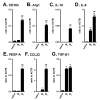
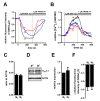

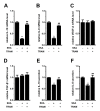
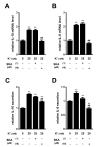
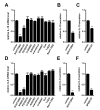
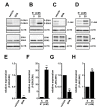

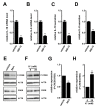
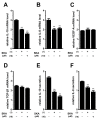
Similar articles
-
Downregulation of IL-8 and IL-10 by LRRC8A Inhibition through the NOX2-Nrf2-CEBPB Transcriptional Axis in THP-1-Derived M2 Macrophages.Int J Mol Sci. 2024 Sep 5;25(17):9612. doi: 10.3390/ijms25179612. Int J Mol Sci. 2024. PMID: 39273558 Free PMC article.
-
Transcriptional Repression of CCL2 by KCa3.1 K+ Channel Activation and LRRC8A Anion Channel Inhibition in THP-1-Differentiated M2 Macrophages.Int J Mol Sci. 2025 Aug 6;26(15):7624. doi: 10.3390/ijms26157624. Int J Mol Sci. 2025. PMID: 40806751 Free PMC article.
-
Inhibition of Interleukin 10 Transcription through the SMAD2/3 Signaling Pathway by Ca2+-Activated K+ Channel KCa3.1 Activation in Human T-Cell Lymphoma HuT-78 Cells.Mol Pharmacol. 2019 Mar;95(3):294-302. doi: 10.1124/mol.118.114405. Epub 2019 Jan 8. Mol Pharmacol. 2019. PMID: 30622214
-
Ca2+-Activated K+ Channel KCa3.1 as a Therapeutic Target for Immune Disorders.Biol Pharm Bull. 2018;41(8):1158-1163. doi: 10.1248/bpb.b18-00078. Biol Pharm Bull. 2018. PMID: 30068864 Review.
-
Role of KCa3.1 Channels in Modulating Ca2+ Oscillations during Glioblastoma Cell Migration and Invasion.Int J Mol Sci. 2018 Sep 29;19(10):2970. doi: 10.3390/ijms19102970. Int J Mol Sci. 2018. PMID: 30274242 Free PMC article. Review.
Cited by
-
Stefin B alleviates the gouty arthritis in mice by inducing the M2 polarization of macrophages.Naunyn Schmiedebergs Arch Pharmacol. 2024 Aug;397(8):5677-5688. doi: 10.1007/s00210-023-02911-w. Epub 2024 Jan 31. Naunyn Schmiedebergs Arch Pharmacol. 2024. PMID: 38294507 Free PMC article.
-
Recent Developments in Ion Channel and Ion-Related Signaling.Int J Mol Sci. 2023 Sep 22;24(19):14419. doi: 10.3390/ijms241914419. Int J Mol Sci. 2023. PMID: 37833868 Free PMC article.
-
Down-Regulation of CYP3A4 by the KCa1.1 Inhibition Is Responsible for Overcoming Resistance to Doxorubicin in Cancer Spheroid Models.Int J Mol Sci. 2023 Oct 27;24(21):15672. doi: 10.3390/ijms242115672. Int J Mol Sci. 2023. PMID: 37958656 Free PMC article.
-
Potassium channels: Novel targets for tumor diagnosis and chemoresistance.Front Oncol. 2023 Jan 10;12:1074469. doi: 10.3389/fonc.2022.1074469. eCollection 2022. Front Oncol. 2023. PMID: 36703789 Free PMC article. Review.
-
Downregulation of IL-8 and IL-10 by LRRC8A Inhibition through the NOX2-Nrf2-CEBPB Transcriptional Axis in THP-1-Derived M2 Macrophages.Int J Mol Sci. 2024 Sep 5;25(17):9612. doi: 10.3390/ijms25179612. Int J Mol Sci. 2024. PMID: 39273558 Free PMC article.
References
MeSH terms
Substances
Grants and funding
LinkOut - more resources
Full Text Sources
Medical
Research Materials
Miscellaneous

